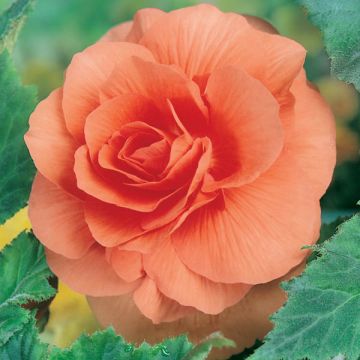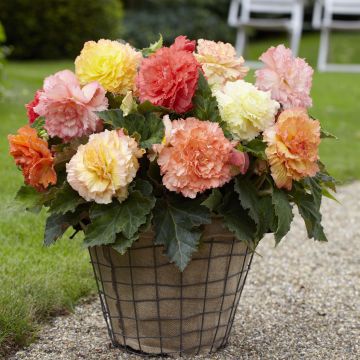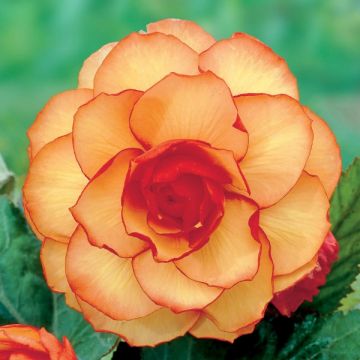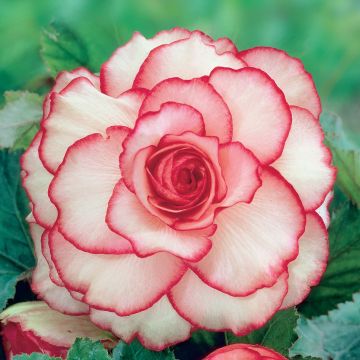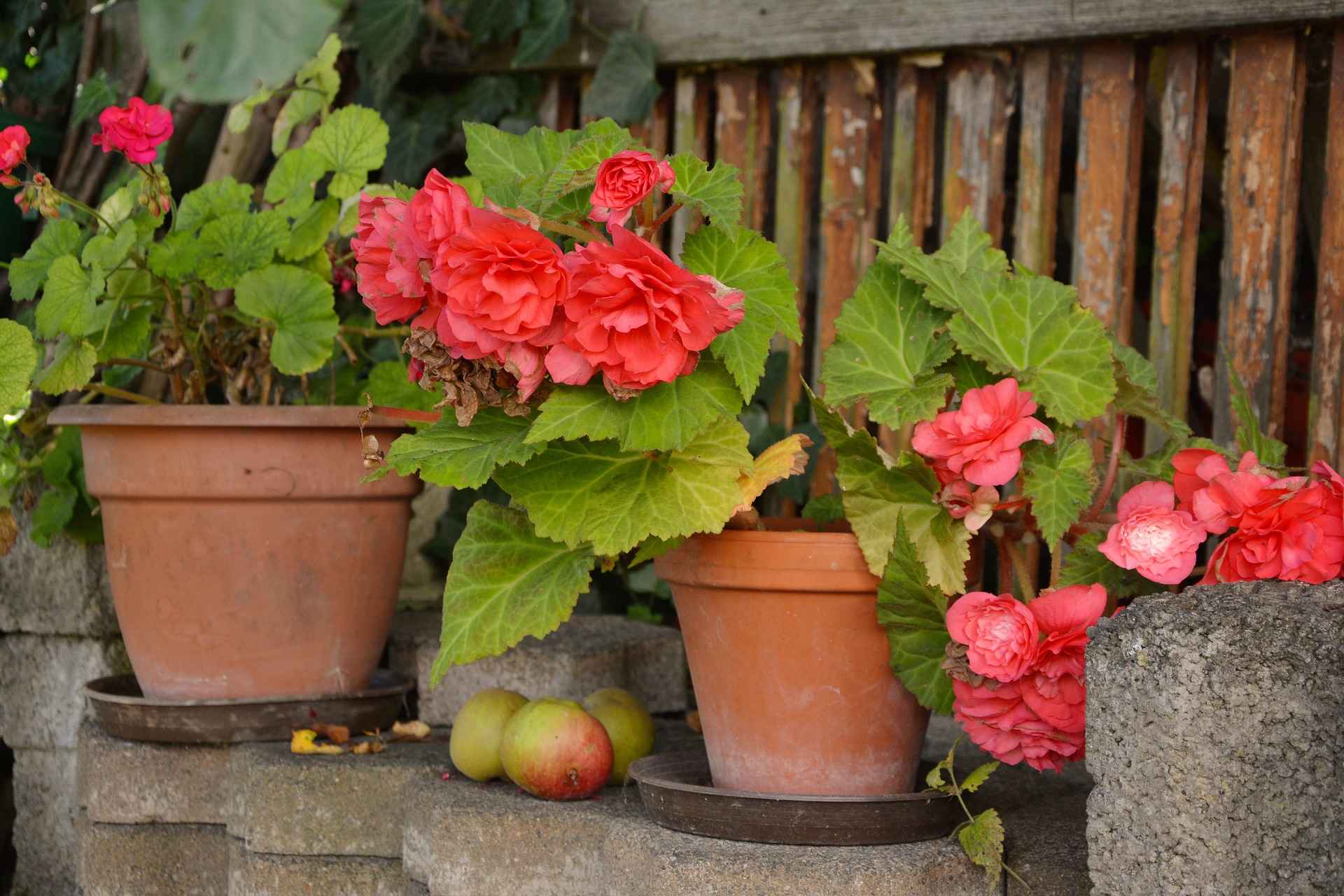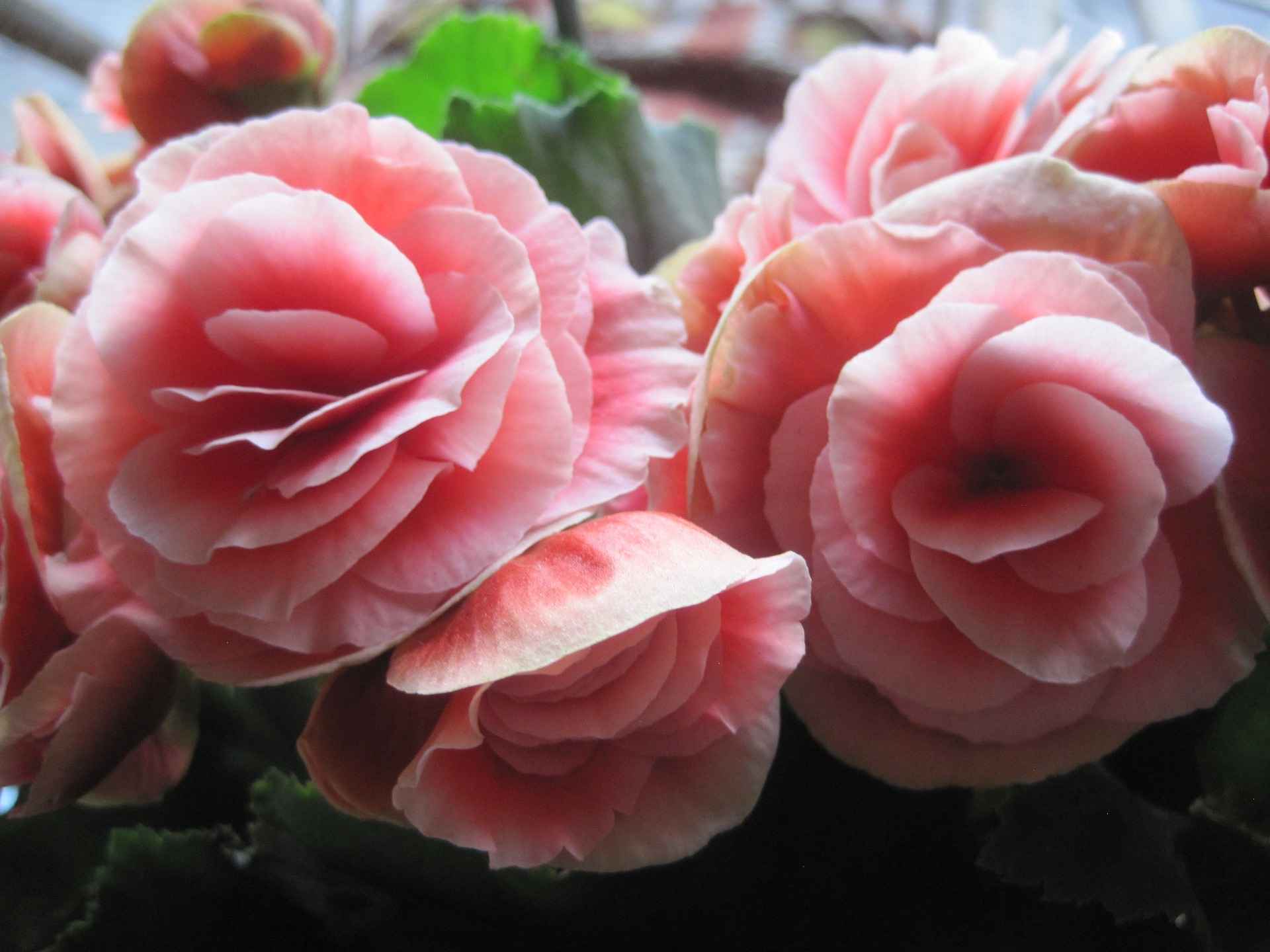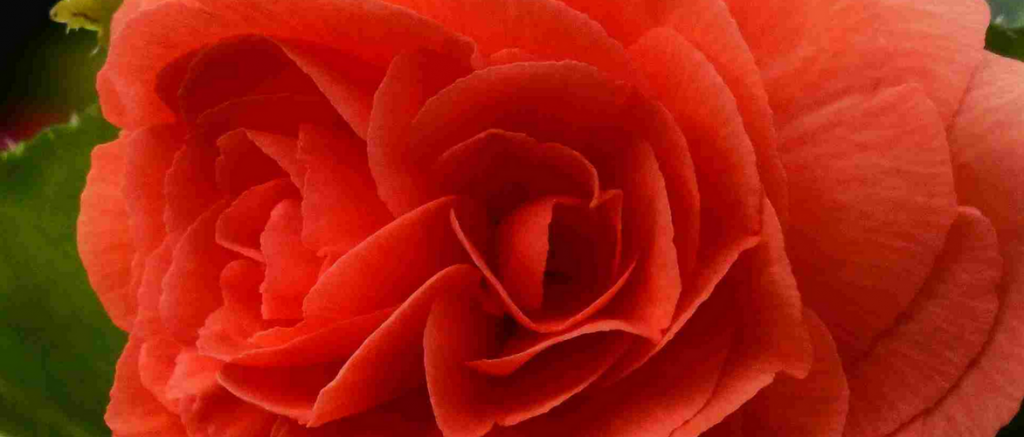
Overwintering Tuberous Begonias
To properly store them and protect the tubers from frost
Contents
The tuberous begonia is a generously flowering plant, perfect for pots, planters or borders, which brightens up partially shaded areas. However, as winter approaches, it’s essential to properly overwinter the tubers, as this plant cannot tolerate frost. Its tuber, recognisable by its rounded and slightly flattened shape, resembles that of a cyclamen. To ensure a beautiful flowering display the following spring, it’s important to know how to store and preserve tuberous begonias during winter. We cover all the details in our advice sheet.
What is a tuberous begonia?
The tuberous begonia (Begonia × tuberhybrida) is grown here as an annual flowering plant. However, if you take care of its tuber during winter (stored frost-free), you can easily keep it for several years. It grows from a tuber, an underground storage organ that allows it to survive during dormancy. Unlike semperflorens begonias (which flower all year round), tuberous begonias have seasonal growth and go dormant in winter.
Growing and care in the garden
- Exposure: partial shade to light shade (avoid full sun, which scorches the foliage).
- Soil: rich, light, humus-rich and well-drained. Excess water can cause the tubers to rot.
- Planting: in April-May, after the last frosts, in pots or in the ground. Place the tuber with the hollow side facing upwards.
- Watering: regular but not excessive. Avoid wetting the foliage to prevent diseases.
- Flowering: from June until the first frosts, with large double or single flowers in vibrant colours (red, pink, yellow, orange, white…).
Main species and varieties
- Begonia × tuberhybrida: the most common, with large double or ruffled flowers.
- Begonia pendula: trailing habit, ideal for hanging baskets.
- Begonia multiflora: abundant small flowers, very floriferous.
- Begonia grandiflora: larger, spectacular flowers, perfect for flower beds.
Discover all our begonia bulbs in our online nursery.
Read also
Planting BegoniasWhy overwinter tuberous begonias
Tuberous begonias are non-hardy plants, meaning they cannot tolerate frost. In winter, if left in the ground or in pots outdoors, their tubers risk rotting or dying due to cold and excessive moisture.
Good reasons to overwinter tuberous begonias
- Protect tubers from frost: below 5°C, the tuber tissues begin to deteriorate.
- Prevent rot caused by moisture: overly wet soil in winter can lead to fungal growth.
- Ensure beautiful blooms the following year: proper overwintering keeps tubers healthy and ready to regrow in spring.
- Multiply begonias: during overwintering, tubers can also be divided to produce new plants.
Discover other Begonias
View all →Available in 1 sizes
Available in 1 sizes
Available in 1 sizes
Available in 1 sizes
Available in 1 sizes
Available in 1 sizes
Available in 1 sizes
Available in 1 sizes
Available in 1 sizes
Available in 1 sizes
Read also
Overwintering Tuberous BegoniasEquipment needed
- Secateurs : for cutting back faded stems.
- Garden fork or trowel: for lifting tubers without damaging them.
- Soft brush or cloth: for removing excess soil.
- Wooden crate or cardboard box: for storing tubers.
- Dry sand, peat or newspaper: to keep them protected from moisture.
- Gardening gloves : to protect your hands when handling.
- Finally, a cool, dry place (cellar, garage, unheated attic): for overwintering tubers.
How to proceed?
- After the first frost, once the foliage has withered, lift the begonias from the ground using a garden fork
- Allow the plant and its foliage to dry by storing them for a few days in a dry place
- Using secateurs, remove the stems and clean the tuber with a soft cloth to ensure no soil remains, as this could cause rotting
- Store them throughout winter in some peat, in a dry, frost-free place, ready to be replanted after the last frosts
- Subscribe!
- Contents





































